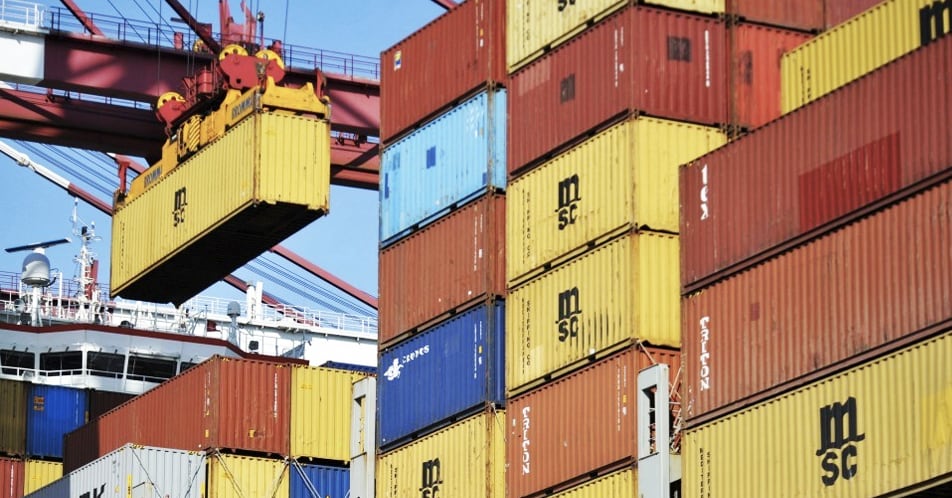Ali Hasanbeigi is CEO of Global Efficiency Intelligence. Daniel Moran is an economist at KGM & Associates.
The 1990s were a crucial decade in the history of climate policy. Following the launch of the United Nations Framework Convention on Climate Change in 1992, negotiators from over 50 countries successfully shepherded the Kyoto Protocol to fruition in 1997 — thus formally inaugurating the modern era of international climate policy, with its focus on national contributions toward global emissions reduction targets.
What the climate negotiators of the 1990s did not know at the time was that a parallel and simultaneous set of global trade agreements would create a glaring loophole in their efforts to contain the carbon dioxide emissions that contribute to climate change. The formation of the World Trade Organization in 1995 opened the valves of global trade and ushered many new producers into the modern global economy, bringing prosperity and modernity to hundreds of millions of people. But it also set off a surge in carbon emissions.
In 2015 (the most recent data), about 25 percent of global greenhouse gas emissions passed through this glaring “carbon loophole,” one of the most critical and under-discussed problems in international climate policy circles. Last week, we released new research that updates previous efforts to fully quantify the carbon loophole and shows why closing it is increasingly urgent. Our findings reveal that in many cases, countries that have claimed net reductions in carbon emissions see those reductions fully — or mostly — wiped out once the carbon loophole is taken into account.
The reason for this is that the targets of the Kyoto Protocol and the Paris Agreement only measure domestic emissions — that is, the greenhouse gasses emitted directly inside a country’s borders. When the Kyoto Protocol was drafted, the concept of emissions fleeing regulation was discussed but was ultimately not included in the treaty, presumably because it was too complex.
But while virtually every nation on Earth participates in the global system of trade, the emissions associated with the products they import — which often constitute significant shares of a nation’s economic activity — are not counted in the Paris targets. The foreign portion of a country’s consumption-based carbon footprint is therefore effectively invisible. With the loophole, traded emissions are attributed to producers while consumer nations enjoy the benefits of “meeting their targets” without having to reduce pollution that results from their economic activity.
According to our research, the overall trend is that high-income, high-consuming countries, such as the United States, Japan, Australia and Western European states, have Paris Agreement targets calibrated to their domestic emissions, even though their true carbon footprints are much larger. The United Kingdom stands out in particular. Its territorial emissions today are near or below its 1990 levels, but its consumption-based emissions (including the emissions embodied in trade) have increased substantially. Many other nations are in the same predicament.

A first step toward closing the carbon loophole is simply to get a good measurement of it by quantifying the carbon footprint of imported products. A fast-growing field of tools and standardized methodologies, including the Eora model, the 190-country supply chain database used in our report, makes it easier than ever for governments and private companies to identify high-carbon products in their supply chains.
The next step is to establish rules that favor the purchase of cleaner, low-carbon products and that drive clean innovation through the power of the purse. Policy solutions, such as California’s Buy Clean Act, set carbon standards for some of the heaviest-emitting sectors, such as steel. By adopting “buy clean” principles more widely, nations and private companies can unleash the power of low-carbon investment and innovation. This approach aligns spending and climate priorities and can be deployed rapidly, often at zero cost to both governments and private companies alike.
Governments are major purchasing agents. They operate fleets, construct schools and buildings, and commission major projects that use large amounts of steel, cement and other carbon-intensive products. When governments “buy clean” as a matter of policy, they can have a real impact in closing the carbon loophole.
Other solutions include concepts such as border tax adjustments, which would essentially tax imported products based on their carbon intensity. This would help ensure that clean, domestic industries aren’t penalized by uneven climate policy among trading partners. Another solution could involve “climate clubs” for countries that want to form low-carbon trading blocks.
But the key principle in closing the carbon loophole is to understand that carbon emissions don’t respect borders. The policies we enact to reduce them must reflect that. California’s new climate laws announced this week are a standout example in this regard.
With 25 percent of global carbon emissions potentially unregulated, addressing the carbon loophole is not optional. By adopting the underlying principles of California’s Buy Clean Act, countries and companies can work together to help unleash investment in clean technologies, maintain a competitive edge and close the carbon loophole.
This was produced by The WorldPost, a partnership of the Berggruen Institute and The Washington Post.





